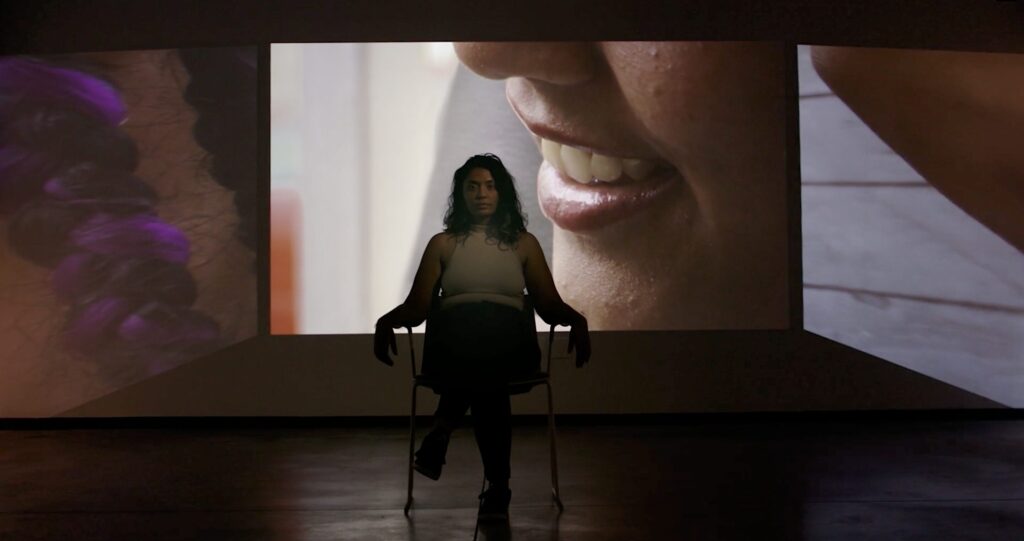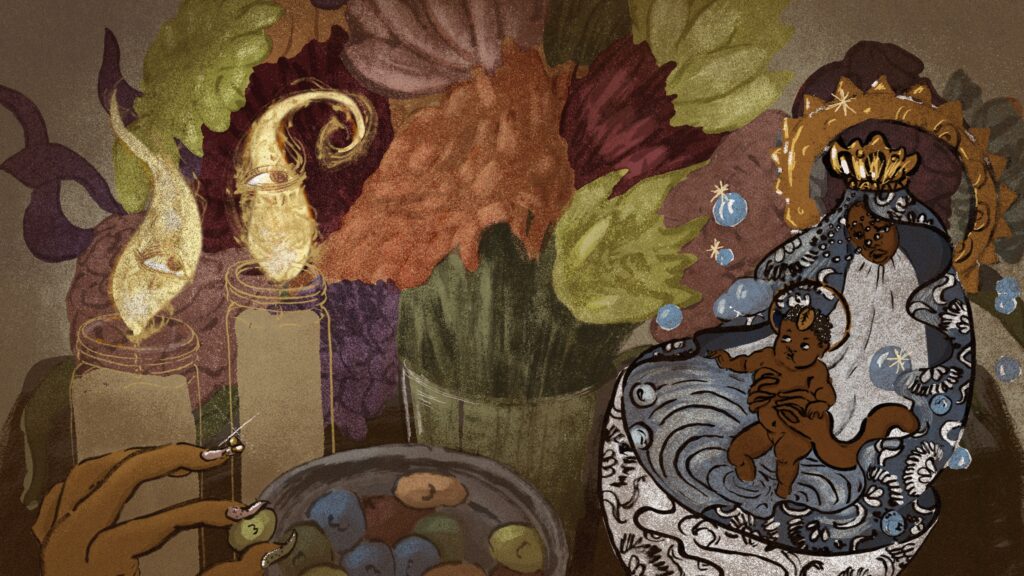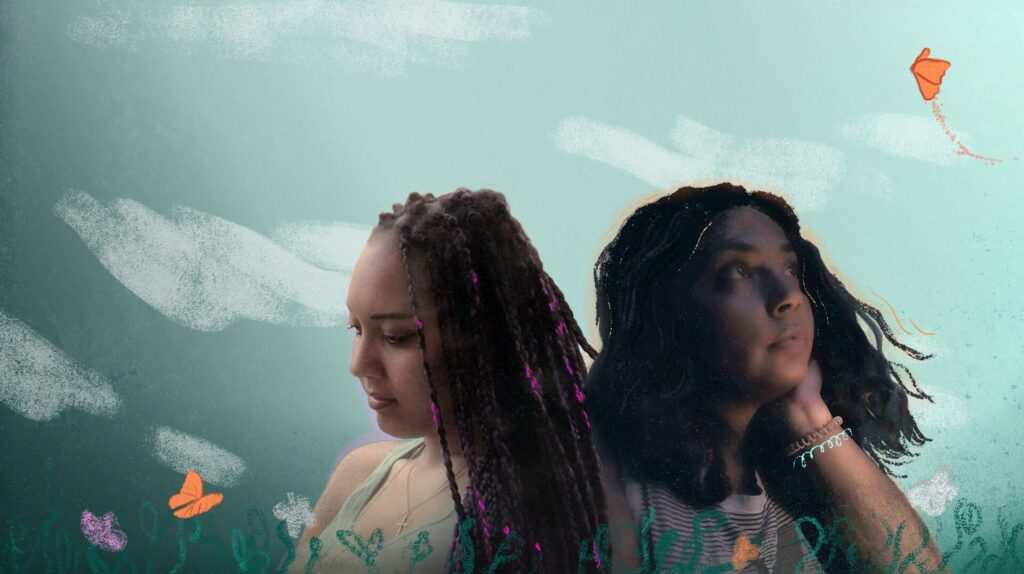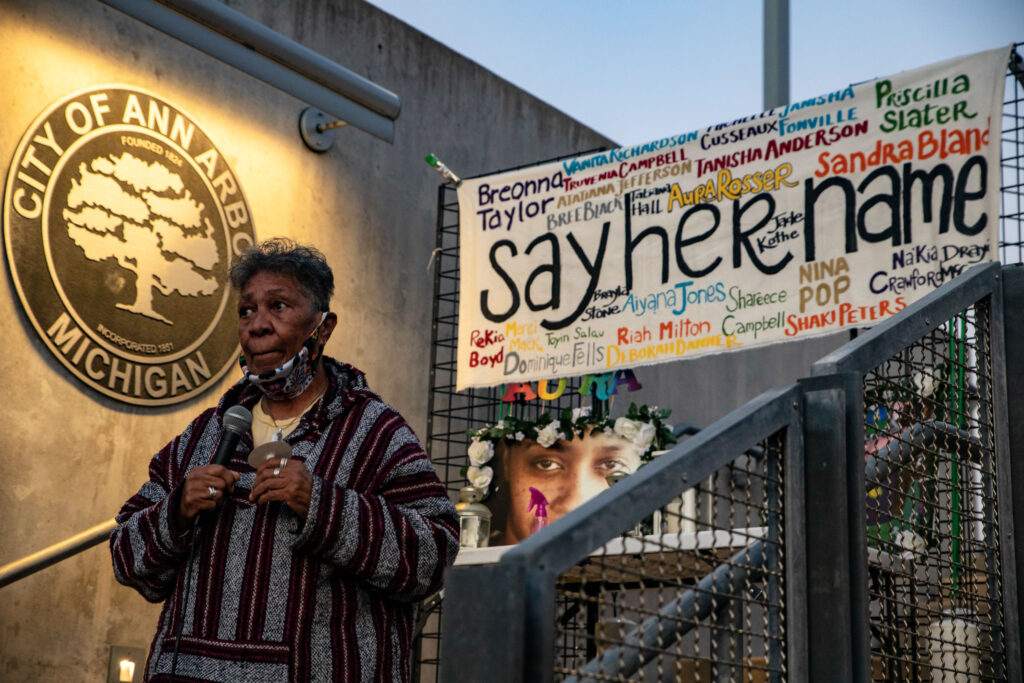Spotlighting Black Women’s Mental Health Struggles

Content Warning: This article and the film it features contain mention of mental health struggles, police violence, sexual abuse, and suicide.
Black women are not invincible. However obvious this statement may seem, many Black women encounter people who frame them as perpetually strong—to magical and almost superhuman levels. The “Strong Black Woman” can overcome any problem, withstand any obstacle, and endure any hardship.
But at what costs? The Black Superwoman myth and Black Girl Magic do not leave much space for weakness, rest, or vulnerability. In fact, the notion that Black women are inherently stronger than others has a sordid history. Medical acceptance of this logic enabled Dr. J. Marion Sims, the so-called father of modern gynecology, to experiment on enslaved women without anesthesia. This sentiment still pervades contemporary medical systems that disproportionately underserve, misdiagnose, over-police, and neglect the voices of Black women.
As superwomen, Black women are tasked with protecting themselves, caring for their community, and always forging ahead, even to their detriment. In the process, their mental health struggles are often neglected, if not mocked. This is a particularly dangerous mix given the high rates of social and political adversity—domestic violence, responsibility for family upkeep, police brutality—that uniquely affect Black women.
Last year, Afro Puerto Rican anthropologist, educator, and documentary filmmaker Elena Herminia Guzman released a short film that highlights Black women’s very real but often overlooked mental health issues. Guzman invested seven years of energy into developing Smile4Kime. The film visualizes her relationship with a friend who passed away in 2019. As a visual anthropologist, Guzman sees Smile4Kime and its ongoing screening circuit as a way to honor the complicated bond the two shared and to situate Black women’s mental health struggles in larger social and political context.
What story does Smile4Kime tell?
The film is about Kime and I, friends through life and death. It reflects on Kime’s life and passing, and my own grieving process. However, it is predominantly framed through our friendship, which helps us take on the heavier topics with intimacy, nuance, and care.
The film contemplates not only the tragedy and oppression she faced—mental health issues, police violence, and sexual assault among them—but also her life and beauty. Even the title reflects this duality. Smile4Kime was first her email and then the broader social media username she used because she wanted people to smile for her even when she couldn’t smile for herself.
The film serves as a kind of living altar for Kime in all her complexity. Much like an altar, the film is a place for viewers to grieve, revere, memorialize, and go in and out of time and space. The film also uses animation, which becomes a kind of bridge between worlds of the material and spiritual, the present and the past. Especially since we could no longer take any more images of Kimberly in her physical form, being able to depict things like dreams—which otherwise would be difficult to conceptualize—enhanced our ability to craft and expand the film’s narrative.
In the film, there are video clips of you interviewing Kime, and vice versa, before she passed. How did those interviews come to be?
The film started when I was in graduate school during my first filmmaking class. For an assigned interview project, I decided to interview Kime because I knew she was a dynamic and beautiful person who would be great on camera. Admittedly, it was hard for me to understand and relate to her because of how open she was about her mental health issues. I was raised in the exact opposite environment. It was like, “we don’t talk about this,” “get over it,” “pull yourself up by your bootstraps.”
Mental health was not really considered a valid concern or reason not to do something. So, I had to really overcome that aspect of myself. This project was a way to get closer to her in a lot of ways. We decided to make a film about Black women’s mental health because we felt like we had never seen any films that really delved into the topic. We planned to use Kime’s experience to explore larger social and political topics.
Originally, I was not supposed to be in the film. I had actively avoided it, preferring to stay behind the camera. However, after Kimberly passed away, I wanted to extend the same vulnerability that she had extended to me. To make the film about more than just her death, struggles, and the violence enacted upon her, I felt like it had to be thought and told through a vulnerable and loving lens of friendship.
In opening up to being vulnerable, I drew on autoethnography as a legacy touched by the critical works of visual ethnographers Zora Neale Hurston, Safi Faye, and Sara Gómez, among others. Now vulnerability is critical in my teaching, writing, and film because I have grown to see the healing that is possible through it.
What have audience reactions looked like?
As feminist scholar bell hooks wrote, “Healing occurs through testimony.” At its core, that is what the film allows, not only for me and Kimberly but also the audience. We are so inundated with images of violence that it is easy to want to turn it all off. However, the film draws from a feminist methodology of testimony to ask, “What does it mean for us to bear witness to and hold space for the pain and oppression of a Black woman who was failed so many times by the system?”
The ultimate message for people to take away, as Kime says in the film, is that many people battling mental health issues don’t want to be “fixed” because there’s no way you can fix them. Instead, they want someone to listen and hold space for them. I think that’s what the film is doing; it’s holding space for Kime to be listened to.
Even though the story is a very personal one about me and a friend, there is a way in which other people can invest in the story, whether it’s just a feeling of knowing what it’s like to grieve someone who has passed, grieve a part of yourself, or experience mental health struggles. Although people are generally scared to talk about these topics, some audience members who have had mental health issues or a suicidal ideation or attempt will say, “Thank you, because I rarely ever see this kind of story.” Others have told me the film helped them think differently about a friend or a loved one’s similar experiences.
Were extra steps taken considering how serious this topic is?
Because the film is so sensorial, everyone takes something very different from it. It is always going to be about their own embodied reactions. While the film itself will stay the same, the audiences watching and the surrounding circumstances are always going to change. Therefore, everyone’s reaction will be differently personalized and felt.
For this reason, we as the film’s production team tried our best to care for the audience when curating screening events. Determined to offer more than a concluding hotline phone number, we had long conversations about how to care for our audience after they watch the film. We make sure to have resources available, including a companion zine. We’ve also involved artists, death doulas, and counselors for audience members to talk to, and we invited attendees to create a community altar. It’s all about allowing people to breathe and ground themselves after such an intense moment of testimony.
What social misconceptions of Black women’s mental health became more apparent to you while making and screening Smile4Kime?
Kimberly talks about one of the primary misconceptions in the film when she says, “When I’m having a mental health crisis, my family thinks, ‘No, that’s a white person thing.’” Such stigmas are still very much alive. There’s not an ability for Black people to be vulnerable or not strong all the time. When it comes to medical care or family care, this notion is a big barrier for many people along their mental health journeys.
Another misconception is how people conceive of movements such as Black Lives Matter and Me Too separately. Through Kime’s story, we see how deeply interconnected they are. There are palpable overlaps between mental health, police violence, and sexual assault. Kime’s story shows what intersectionality actually means for a Black woman who experienced sexual assault, only to then be assaulted by police. I dare say that was a more likely outcome because she was a Black woman.
What might people do with all that you’ve shared here? And what are your hopes for the film in relation to that?
It is important to think critically about how to support loved ones in crises. We know so many stories about Black people having mental health crises who end up dead after the cops are called. So, we know that every time someone calls the police, that potential is there. When I was supporting Kime through her crises, that was always the biggest thing. Unfortunately, this carceral method is one of the few avenues we have, but it’s very dangerous. In such situations, how does one learn how to listen and not pass judgment rather than trying to proscribe, advise, or “fix” things. How does one go about responding in a non-carceral way?
Going further, in cases where someone’s life is in imminent danger, what might next steps look like if cops are truly to be seen as a last resort? Through the narrative of the film and the community-based screening events we organize, we want to give people tools to understand because it can be overwhelming. It can feel like you have the weight of the world—and literally someone’s life—in your hands.
Moving forward, we are working with an educational distributor called Good Docs to get the film into classrooms and have people teach it within their syllabi. The film is also available to stream as part of Season 16 of Black Public Media’s AfroPop. We also want to do an impact campaign where we work with decolonial Black mental health healers and specialists with community connections. We want to be able to provide resources (healing circles, non-carceral mental health interventions, et cetera) to the people represented in this film.





























